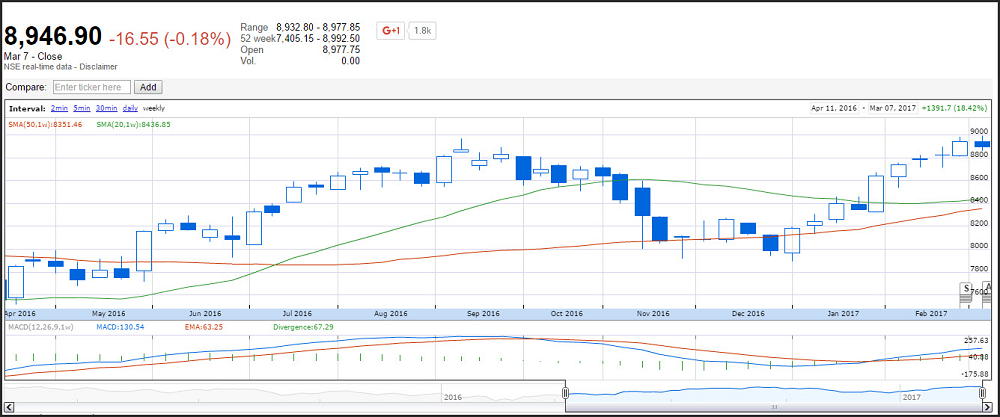The Nifty 50, India’s most liquid basket of stocks, broke out this week, testing the 9K level, following positive news about the potential growth of the economy according to the U.S. based credit rating agency Fitch. With animal spirits across the globe driving share trading markets higher, India’s riskier assets will likely continue to see positive momentum.
According to Fitch, the Indian economy will likely increase by 7.1% this year, and increased by 7.7% in 2018 and 2019. This follows a 7% increase in GDP reported by the Indian government, which Fitch said was surprising given expectations that the Indian economy would growth by 7.4%. Official data points to strong private consumption, which can boost economic growth.
An issue that could hold back growth is the potential decline in lending from Indian state banks. Banks are now reluctant to make additional loans to riskier companies. Stressed assets now make up more than 17% of their total lending portfolio. This is the largest percentage of stress assets held by a major world economy. While banks are not in immediate danger, they continue to be a drag on the economy.
Banks Own Too Much Stressed Debt
The issue with stressed debt is that most portfolios are market to market as opposed to mark to be banks could exit their positions. This issue raised its ugly head in the United States in 2008, when banks tried all at once to exit their stress mortgage debt, but there were no buyers. The prices they receive were close to zero which generated significant losses and many banks such as Lehman Brother went bankrupt. While this is not likely the case for Indian banks, investors have long memories.
Banks are reluctant to lend more to companies that might not be able to pay their loans, just as debt stressed companies are reluctant to borrow: Bank credit growth hit its lowest point in nearly two decades in January 2017. A bankruptcy code passed last May that was meant to help the situation has yet to have much of an impact, given India’s slow courts and lack of insolvency experts. This could give rise to a bad bank were loans are moved of the books of the state banks and are taken on by private industrial as pennies on the dollar.
The Nifty 50 share trading continues to see an upward bias as it approaches resistance levels. A break of the 9,100 level could see significant upside. Support is seen near the 20-day moving average at 8,400 and then the 50-day moving average at 8,300. 
Momentum on the Nifty 50 is positive as the MACD (moving average convergence divergence) index recently generated a crossover buy signal. This occurs as they spread (the 12-day moving average minus the 26-day moving average) crosses above the 9-day moving average of the spread. The index moved from negative to positive territory confirming the buy signal. The index is now printing in the black with an upward sloping trajectory which points to higher prices for the Nifty 50.




